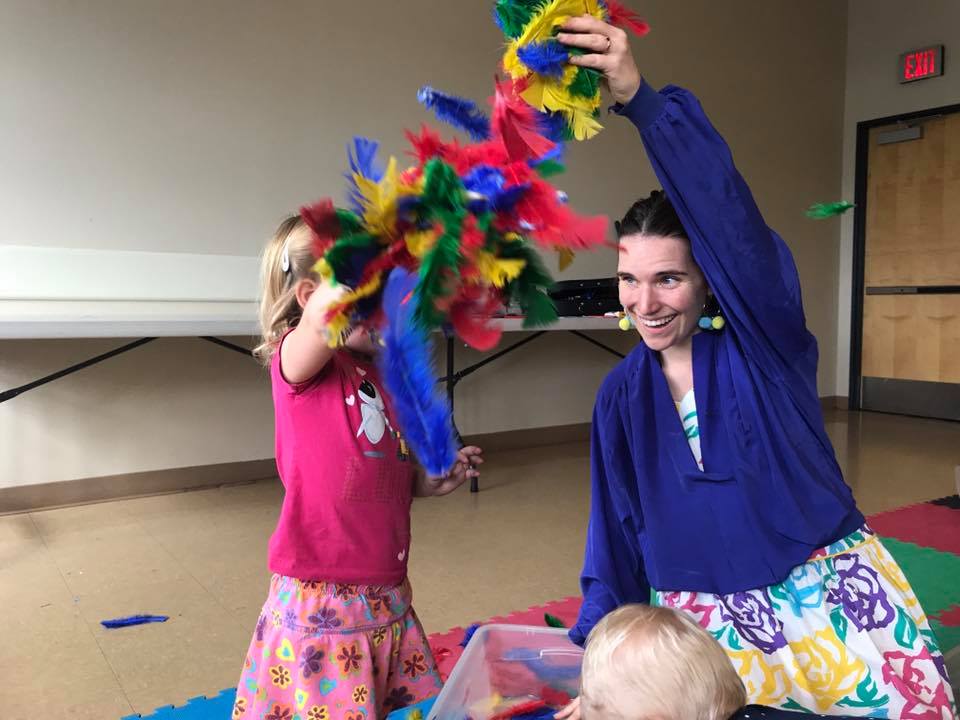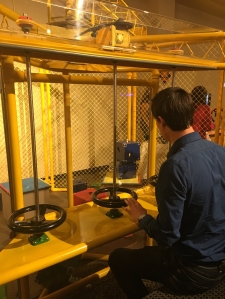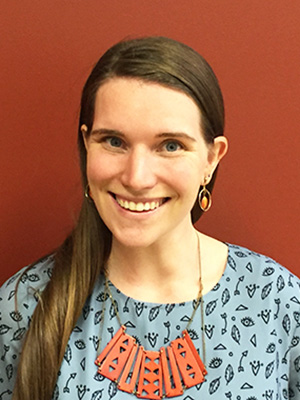NOTE: This post was written by Emmy Brockman, WonderLab Education Director from 2017 – 2019
The front page of the WonderLab website proudly proclaims, “Play is Serious Learning!” As an early childhood education specialist, education researcher, teacher educator, and WonderLab’s Director of Education, I have been steeped in the truth of this phrase for years. I am a play advocate! A play fanatic! A play-o-holic! My cards have long been on the table, and I’m on the side of play. As an educator, however, one of my most important jobs is to put myself in the shoes of others, so my teaching can meet them where they are. You each come to this blog post with different experiences. Perhaps you’ve yet to consider the connections between play and learning; perhaps you’ve explored play and learning in some contexts but not others; perhaps the mear definition of “play” evades you. If the final point is true for you, you’re in good company! I took a whole class in grad school devoted to play, and I still can’t give a succinct definition. Many have admirably aimed to define play, scores have beautifully chronicled the history of play, and brilliant dozens have discussed the role of play in education and development. My aim with this post is less lofty; I am here to share some stories. The following three true narratives are actually a bit more than stories, they are an assessment tool called learning stories, which aim to observe and share the learning and play of children and adults. If you are interested in learning stories and/or more resources about the value of play, stay tuned to this blog, and I’ll continue to share.
Story One
Dear Avery*,
I saw you today in Science Sprouts class, and you were so curious about the pool full of feathers. At first you watched as other children, mostly a few months older than you, took handfuls of feathers and experimentally through them into the air. I handed you five feathers, and you gripped them and showed them to your dad before tossing them up and giggling. When I looked at you again, you were sitting in the pool of feathers and noticing that when you moved your legs back and forth, the feathers would move too. I placed several handfuls of feather on your legs, saying “feathers keep birds warm in the winter, do your legs feel warm?” That experiment must have made an impact, because you took an armful of feathers and pressed them into the chest of another child saying, “Warm”. Together, you and I covered the arms and legs of that other child in feathers and then you laid down, so I guessed you wanted to be covered in feathers too. When you were all covered accept for your face you again said “warm”! It is not always easy to tell when someone like you, who is about 2 years old, understands a new concept; but, I think our experimentation and play with feathers made an impact on you, especially because you came back the next day for even more feather exploration!
Story Two
Dear Devin*,
Last night we opened the museum for only adults, and filled it with food, drinks, and tasty chocolate experiments galore! I noticed that you came to the event alone, though you ran into several acquaintances there. Towards the end of the night, you and an acquaintance playfully selected a goal: you would, nay you MUST, use the Giant Crane to pick up a block that was seemingly out of range of the machine. Together (and laughing) you figured out that the only way to grab the wayward piece was to use the momentum of the horizontal pulley to get the rope swinging. Momentum,
velocity, and force were all considered. As an adult, it is not so common to put yourself in a situation where you try and fail and try and fail over and over. I think I watched youfail at least a dozen times. But guess what!? You were laughing the whole time and the experience ended with a block successfully hoisted into the air, carefully placed down, and a smiling high five exchanged between new friends. I’m not sure you even realized how long you sat focused at the “toy” crane, and I think you felt genuine success when your playful mission was accomplished. I wonder what adventurous goals you will set when you visit the museum for our next adult night.
Story Three
Dear Campbell*,
I watched you explore at the Cubelet table. Your goal was to figure out what the red 
I love learning stories because they offer an opportunity to pause, observe, assess, and reflect upon the learning and exploration that occur when we play. Learning stories are not just for educators, so if you have stories or photos to share of your own learning, or that of your child, please share them with me here on the blog or on WonderLab’s Facebook page. The more the value of play is made visible, the more it respected and seen as SERIOUS LEARNING!
*names changed
About the Author: Emmy Brockman is WonderLab’s Education Director. She has an MA in Early Childhood Education, over a decade of museum education experience, and can make pretty convincing dolphin noises. Emmy oversees all of WonderLab’s educational programs, and has the special pleasure of teaching much of the museum’s early childhood programming – where her background as a opera singer and award winning children’s musician/composer really comes in handy. Emmy is a big fan of earth and atmospheric science.




 About the Author: Emmy Brockman is WonderLab’s Education Director. She has an MA in Early Childhood Education, over a decade of museum education experience, and can make pretty convincing dolphin noises. Emmy oversees all of WonderLab’s educational programs, and has the special pleasure of teaching much of the museum’s early childhood programming – where her background as a opera singer and award winning children’s musician/composer really comes in handy. Emmy is a big fan of earth and atmospheric science.
About the Author: Emmy Brockman is WonderLab’s Education Director. She has an MA in Early Childhood Education, over a decade of museum education experience, and can make pretty convincing dolphin noises. Emmy oversees all of WonderLab’s educational programs, and has the special pleasure of teaching much of the museum’s early childhood programming – where her background as a opera singer and award winning children’s musician/composer really comes in handy. Emmy is a big fan of earth and atmospheric science.
Leave A Comment